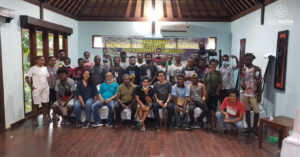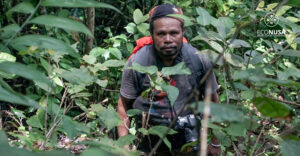
The developer of the interactive map of Papua Atlas hopes to inform deforestation that is happening in Indonesia’s easternmost provinces, Papua and West Papua, where industrial-scale plantations are threatening one of the world’s largest tropical rainforest landscapes.
The Papua Atlas was developed by CIFOR, with financial assistance from the UK Department for International Development (DFID) and is scheduled to launch in 2019.
Although there is already a platform that can check deforestation like that of Global Forest Watch, Papua Atlas has a difference because it can show the actual developments related to plantations and road development.
“As a result, users can see the amount and extent of oil palm or pulpwood concessions or roads that cross the forest in real time,” said CIFOR researcher David Gaveau who developed the map together with his colleague Mohammad Agus Salim.
The map can also be used to search for concessions in various ways, such as using the identity of the parent company, this is what makes the Atlas Atlas a tool that encourages transparency in the plantation sector, said Gaveau.
“The Papua Atlas links land use and forest cover changes that we take from satellite imagery with land use maps,” Gaveau told Mongabay. “So that anyone can check not only at the level of individual plantations, but also large groups (behind them).”
Gaveau said the map was prepared to address the problem of lack of information related to how the concessions are being carried out in Papua at present.
“The point is to show transparency regarding what is happening in the region, and link deforestation with land ownership to show who is responsible,” he said. “To improve corporate accountability, we need to know how much deforestation has occurred, and the area of plantations that have been expanded and which road developments have caused deforestation.”
Prima Land
The Papua region accounts for 35 percent of Indonesia’s remaining rainforest, with a span of 294,000 square kilometers. This region is still remote, it can be seen from the flight of more than 5 hours from Jakarta to the largest city in the region, Jayapura. In addition, the scarcity of infrastructure such as roads, electricity, telecommunications and piped water has made this region the least developed and poorest region in Indonesia.
However, it shows the richness of forests in Papua, home to exotic birds of paradise and many other animal and plant species, remain outside the reach of mining and plantation invasions that have damaged the forests of Sumatra and Kalimantan.
However, this has changed in recent years, thanks to the government’s new focus on increasing development in the region. Oil palm companies have begun to move in, and are quickly clearing the last patches of native forest in Indonesia.
“Because prime land is scarce on other islands, companies are turning to Papua,” Gaveau said.
In a study conducted using data from the University of Maryland, it was found that the Papua region had lost 6,000 square kilometers of forest in the range of 200 to 2017. Papua’s deforestation rates have also increased in recent years, reaching the highest numbers of 980 and 850 square kilometers respectively in the year 2016 and 2017.
Meanwhile, since 2000 the range of industrial scale plantations in Papua, especially for oil palm, has quadrupled, with the fastest growth being in the districts of Boven Digoel and Merauke, Papua Province.
In Gaveau’s research, about 30 percent of all forests lost since 2000 in the region were caused by the clearing of industrial plantations.
In the last two years, the Ministry of Environment and Forestry has handed over to several oil palm companies several lands that were previously designated as forest areas. Most recently, tens of square kilometers of forests, including carbon-rich peatlands, were handed over to PT Sawit Makmur Abadi, an oil palm company operating in the Nabire district of Papua.
Gaveau said he was denied denials from officials in Papua when presenting his findings. They deny giving new concessions in the years which are the peak of deforestation.
Another surprising finding is that after surges in 2015 and 2016, there was a sharp decline in deforestation in 2017.
Even so, Gaveau said he did not have an answer to these findings. Therefore, Papua Atlas will provide enlightenment on this matter.
“Our concession map (used at Atlas) is better than what we normally have, but there is still a lack of information,” he said. “For example, we don’t always know the date the permit was issued (concession).”









